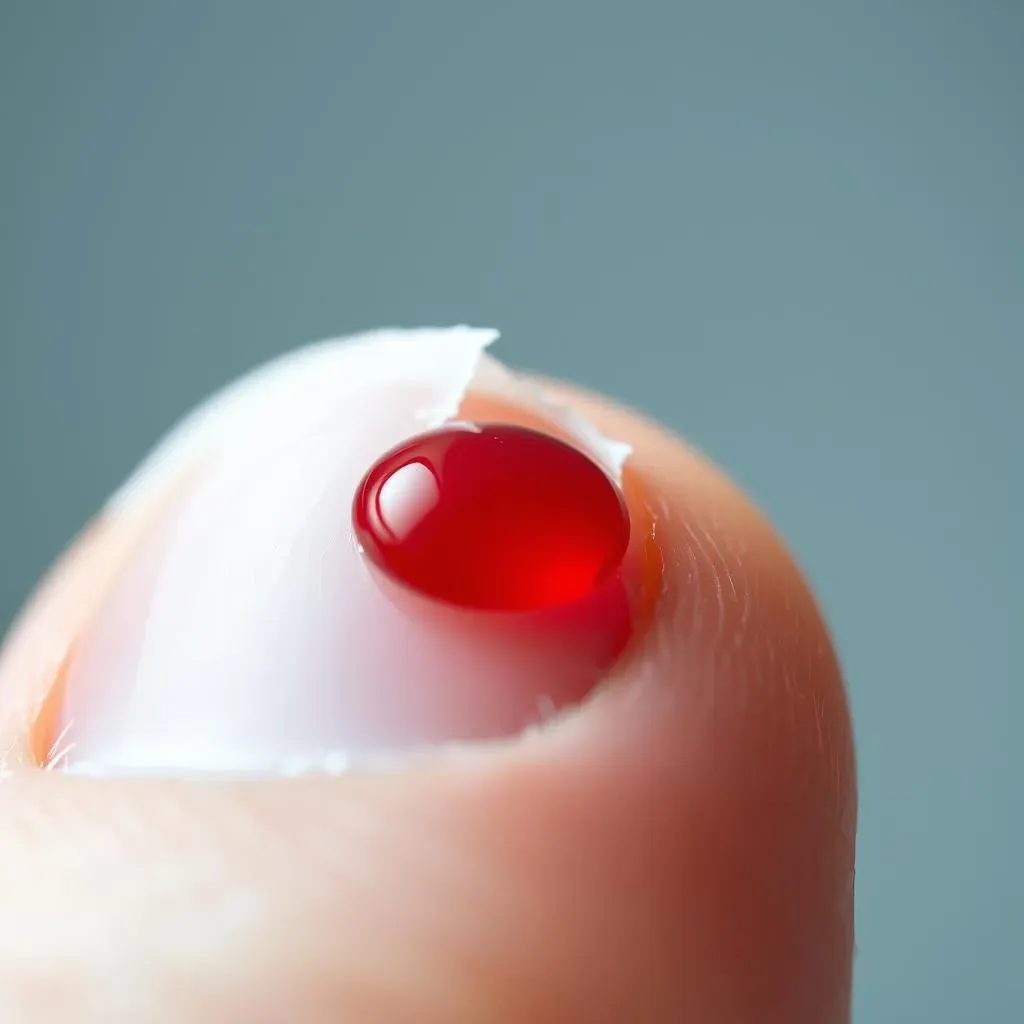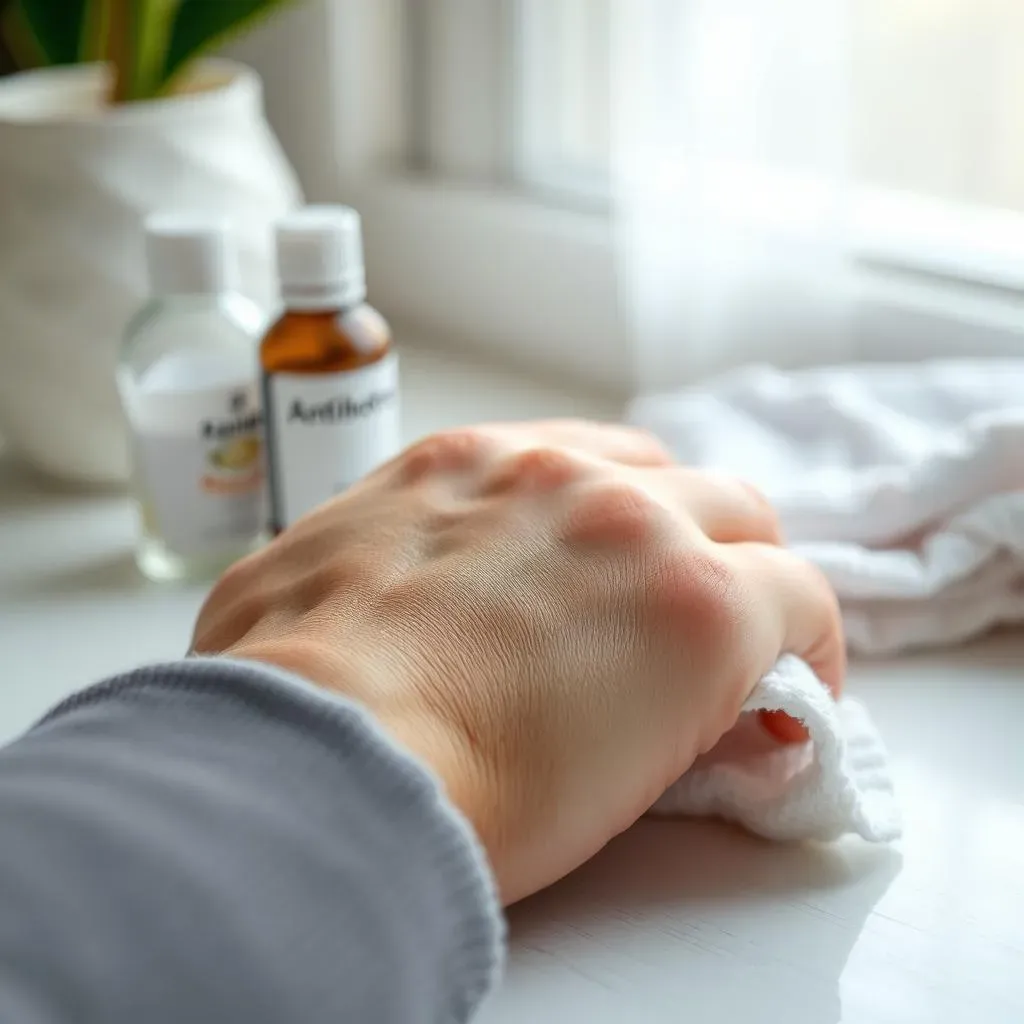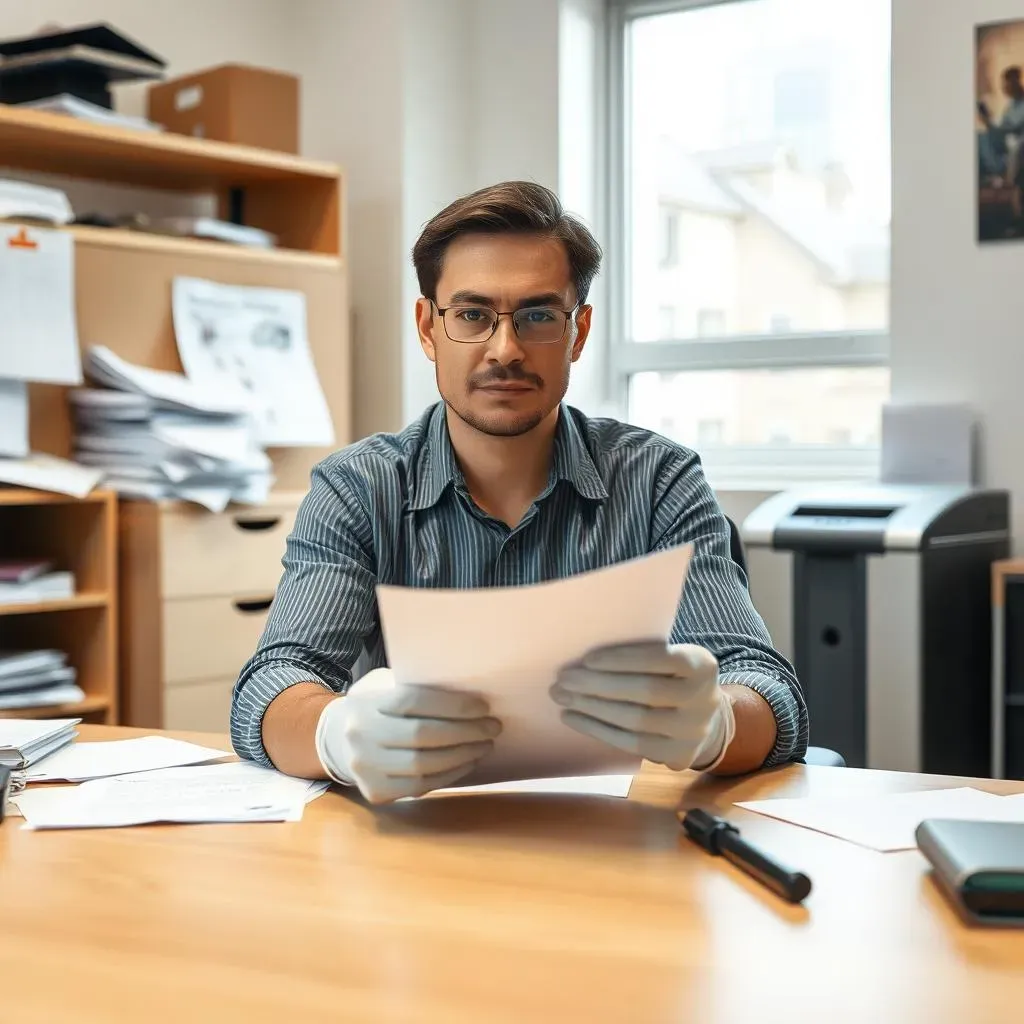Table of Contents
We've all been there: that agonizingly sharp pain from a seemingly insignificant paper cut. It's amazing how such a small injury can pack such a punch! But what exactly *is* it about paper cuts that makes them so incredibly irritating? And more importantly, what to do if you have a paper cut? This article will explore the science behind the sting, providing clear and simple answers to your burning questions. We'll cover the best ways to treat a paper cut, from basic first aid to knowing when to seek professional medical attention. We'll also delve into how to prevent these tiny terrors from happening in the first place. Prepare to learn everything you need to know about navigating the surprisingly complex world of paper cuts. Get ready to become a paper-cut pro! By the end, you'll be equipped to handle any paper cut with confidence, knowing exactly what to do if you have a paper cut. So, let's get started and demystify the surprisingly painful world of paper cuts!
Why Paper Cuts Hurt So Much: What to Do if You Have a Paper Cut
Why Paper Cuts Hurt So Much: What to Do if You Have a Paper Cut
The Anatomy of Agony: Why Paper Cuts Pack a Punch
So, you've got a paper cut. It's tiny, right? Almost invisible. Yet, the pain is disproportionate. Why? It all comes down to nerve density. Our fingertips are packed with nerve endings – way more than most other parts of our bodies. Think of it like this: imagine a tiny, super-sensitive area packed with alarm bells. When a paper cut occurs, these bells go off in a concentrated area, sending a major pain signal to your brain. The sharpness of the cut also plays a role. A paper edge is incredibly thin, making it easy to slice through the top layers of your skin without causing significant bleeding. This means the nerve endings are exposed and irritated directly, without the protective buffer of deeper tissue damage or blood clotting.
This explains why even a superficial cut can feel so intense. It's not just about the size of the wound; it's about the location and the concentration of those super-sensitive nerve fibers. Consider the location of the cut: fingers and hands are frequently used, making them particularly sensitive. A similar cut on your arm or leg might not feel nearly as bad simply because there's a lower concentration of nerve endings in those areas. So, that seemingly insignificant little nick is actually a direct assault on a highly sensitive area of your body.
Body Part | Nerve Ending Density | Pain Perception from Paper Cut |
|---|---|---|
Fingertip | High | Very High |
Arm | Medium | Medium |
Leg | Low | Low |
Beyond the Basics: Factors Influencing Paper Cut Pain
While nerve density is a major player, other factors can intensify the pain of a paper cut. For example, if you're already feeling stressed or anxious, your pain tolerance might be lower, making even a tiny cut feel more agonizing. Certain medical conditions, such as fibromyalgia or nerve damage, can also significantly increase pain sensitivity, making a paper cut feel much worse than it would for someone without these conditions. Think of it like turning up the volume on your body's pain signals.
Furthermore, the type of paper can influence the pain. A rough, jagged edge can cause more damage and irritation than a clean, smooth cut. Think about a piece of construction paper versus a clean sheet of printer paper—the former is far more likely to result in a more painful wound. Also, the depth of the cut matters. While most paper cuts are superficial, a deeper cut will naturally cause more pain because more nerve endings are involved. Finally, individual pain tolerances vary widely; what feels excruciating to one person might be a mild annoyance to another.
- Stress and Anxiety
- Underlying Medical Conditions (e.g., fibromyalgia, nerve damage)
- Paper Texture and Sharpness
- Depth of the Cut
- Individual Pain Tolerance
Treating Your Paper Cut: First Aid for Minor Injuries
Treating Your Paper Cut: First Aid for Minor Injuries
Cleanse the Wound: The First Step to Healing
The first thing you should do when you get a paper cut is to wash your hands thoroughly with soap and water. This removes any dirt, germs, or other debris that might have gotten into the cut. Think of it as giving your wound a mini-spa treatment – a clean environment is crucial for proper healing! It’s important to use clean water and soap to prevent infection. Don't use harsh chemicals or anything that could further irritate the cut. Gentle is key here.
Once your hands are clean, gently rinse the paper cut under running water for a few minutes. This helps to flush out any remaining contaminants. You can then pat the area dry with a clean towel. Avoid rubbing, as this could reopen the wound. Remember, the goal is to create a clean and safe environment for healing to begin.
- Wash hands thoroughly with soap and water.
- Gently rinse the cut under running water.
- Pat the area dry with a clean towel.
Apply Antibiotic Ointment: A Protective Barrier
After you’ve cleaned the wound, apply a thin layer of antibiotic ointment. This creates a protective barrier against bacteria and helps to keep the cut moist, which promotes faster healing. Think of it as a tiny, protective shield for your wound! Many over-the-counter ointments are available, so choose one that you are comfortable using. A small amount goes a long way. Applying too much ointment won't necessarily speed up the healing process; it can even make the area more prone to irritation.
Some people find that a small bandage can help keep the ointment in place and protect the cut from further irritation. If you do choose to use a bandage, make sure it's clean and change it daily, or more frequently if it gets wet or dirty. Keep in mind that many minor cuts will heal just fine without a bandage, as long as they're kept clean and dry.
Treatment Step | Description | Importance |
|---|---|---|
Cleanse | Wash hands and rinse the cut | Removes debris and germs |
Apply Ointment | Use a thin layer of antibiotic ointment | Protects against infection and promotes healing |
Bandage (Optional) | Use a clean bandage if needed | Protects the wound and keeps ointment in place |
Monitor and Observe: When to Seek Medical Attention
After you’ve treated the paper cut, keep an eye on it. Most minor paper cuts heal within a few days without any problems. However, watch out for signs of infection, such as increased redness, swelling, persistent pain, or pus. If you notice any of these, it’s important to seek medical attention promptly. Ignoring an infected wound can lead to more serious complications.
Remember, prevention is always better than cure. Be mindful of how you handle paper, and take steps to avoid future cuts. Simple measures like keeping your work area tidy and using caution when handling sharp objects can significantly reduce your risk of getting paper cuts. A little bit of prevention can go a long way!
When to Worry: What to Do if You Have a Paper Cut That's Infected
When to Worry: What to Do if You Have a Paper Cut That's Infected
Recognizing the Signs of Infection
Most paper cuts heal beautifully on their own. However, sometimes things take a turn. A seemingly harmless paper cut can become infected, leading to complications. The key is recognizing the warning signs early. Look for increased redness around the cut – it shouldn't just be a little pink; we're talking a noticeable, spreading redness. Swelling is another major red flag. The area might feel puffy or swollen, and this swelling might even spread beyond the immediate area of the cut. Persistent pain, way beyond the initial sting, is a significant cause for concern. If the pain is worsening, or if it's not subsiding after a day or two, don't ignore it. Finally, the appearance of pus is a clear sign of infection. Pus is a thick, yellowish-white fluid that indicates your body is fighting off an infection.
Don't dismiss these symptoms as minor inconveniences. A seemingly small infection can escalate quickly, so it's vital to address it promptly. Remember, early intervention is key to preventing more serious problems. If you notice any of these signs, it's time to take action.
- Increased Redness
- Swelling
- Persistent Pain
- Pus
Treating an Infected Paper Cut: When to Seek Medical Help
If you suspect your paper cut is infected, don't try to treat it at home with home remedies or just ignore it. The first step is to contact your doctor or other healthcare professional. They can assess the severity of the infection and recommend the appropriate treatment. This might involve antibiotics, either oral or topical, depending on the extent of the infection. In some cases, they might need to drain the pus to help the wound heal properly. Don't delay seeking professional medical advice – early intervention can prevent the infection from spreading and causing more significant problems.
Remember, your health is paramount. Even though a paper cut seems insignificant, an untreated infection can lead to much more serious complications. Trust your gut and seek medical help if you're concerned. Delaying treatment can prolong the healing process and increase the risk of more serious complications, such as cellulitis (a skin infection) or even sepsis (a life-threatening condition).
Symptom | Severity | Action |
|---|---|---|
Increased Redness | Mild to Severe | Consult a doctor |
Swelling | Mild to Severe | Consult a doctor |
Pus | Severe | Seek immediate medical attention |
Preventing Infection: Best Practices for Wound Care
While we can't always prevent paper cuts, we can take steps to minimize the risk of infection. Keep the wound clean and dry. Gently wash the area with soap and water several times a day, and avoid harsh scrubbing. Keep the area covered with a clean bandage to protect it from dirt and germs. Change the bandage daily, or more frequently if it becomes wet or soiled. Avoid touching the wound unnecessarily, as this can introduce bacteria and slow down healing. If you're unsure about any aspect of wound care, consult your doctor or pharmacist for advice.
Remember, proper wound care is crucial in preventing infections. By following these simple steps, you can significantly reduce your risk of complications. Even minor wounds require attention and care to ensure they heal properly and without complications. Taking care of minor wounds is an important part of maintaining overall health and well-being. Your body will thank you!
Preventing Paper Cuts: Simple Steps to Avoid Future Mishaps
Preventing Paper Cuts: Simple Steps to Avoid Future Mishaps
Keep Your Workspace Tidy
Let's face it: a cluttered workspace is a paper-cut waiting to happen. Think of it like a minefield—every stray piece of paper is a potential hazard. Keeping your desk, workspace, and surrounding areas organized dramatically reduces the risk of accidental cuts. This means regularly clearing away unnecessary papers, properly storing documents, and ensuring that your workspace is free from clutter. A clean, organized environment is not only aesthetically pleasing but also significantly safer.
Investing in a good paper shredder can also be a worthwhile investment. Shredding confidential documents not only protects your privacy but also eliminates the risk of paper cuts from handling loose sheets. Think of it as a two-for-one benefit: improved security and reduced risk of injury. Remember, a little tidiness can go a long way in preventing those annoying paper cuts.
- Clear away unnecessary papers regularly.
- Store documents properly.
- Use a paper shredder for confidential documents.
- Maintain a clean and organized workspace.
Handle Paper with Care
Even in a tidy workspace, accidents can happen. The key is to handle paper with care and attention. Avoid rushing when handling papers, especially those with sharp edges or corners. Take your time and be mindful of your movements. Think of it like a delicate dance—gentle movements and deliberate actions are crucial. If you're working with large stacks of paper, consider using a paper cutter or guillotine to make clean, straight cuts, rather than tearing or ripping the paper.
Consider wearing gloves if you're handling a large quantity of paper or if the paper is particularly sharp or rough. This simple precaution can provide an extra layer of protection. Think of gloves as a shield against those sneaky paper cuts. Remember, a little extra care can make a big difference in preventing those painful little injuries. It's always better to be safe than sorry!
Prevention Tip | Description | Effectiveness |
|---|---|---|
Careful Handling | Avoid rushing and handle paper gently. | High |
Use a Paper Cutter | Use a cutter for clean cuts, instead of tearing. | High |
Wear Gloves | Wear gloves when handling large quantities of paper. | Medium |